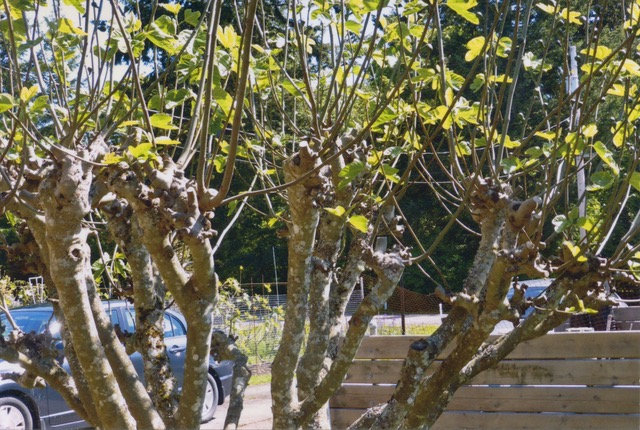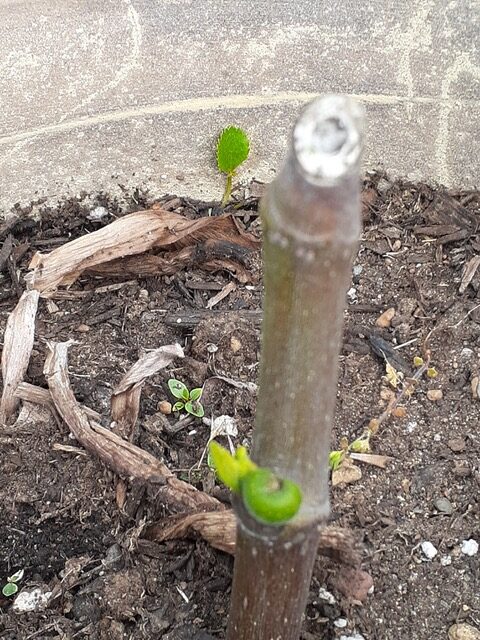Growing Figs in Central Vancouver Island
Rosina T. Schmidt
The key to growing figs is to choose a variety that will ripen properly in the Central Vancouver Island climate. There are many fig varieties suited to the Pacific Northwest.
Figs bear two crops in a year. The first crop is known as the BREBA crop. It is maturing on the previous year’s wood and typically ripens from mid-July to early September.
The second crop is the MAIN crop; it ripens on the current year’s wood, mid-September to mid-October.
Most fig varieties in Pacific Northwest fully ripen only the first crop, the BREBA. Bob Duncan of Fruit Trees and More introduced a few varieties to the Pacific North West, which ripen fully both crops.
Breba crop and Main crop Fig varieties, which ripen fully in the Pacific North West:
Adler, Barbillone, Lattarula (also known as Italian Honey), Lebanese Red, and San Antonio.
Breba crop varieties, which ripen fully in the Pacific North West (but not Main crop):
Desert King, Fiorone di Ruvo, Gentile Bianca, Grantham’s Royal, Izmir 3, Izmir 5, Lampaga, Negronne, Olympian, and San Miro.
Main crop varieties, which ripen fully in the Pacific North West (but not Breba):
Osborne Prolific, and Ronde de Bordeaux.
Figs require at least six hours of full sun daily for the fruit to ripen properly. The young fig trees should be watered regularly until they are fully established. Once established, there is no need for regular watering unless the tree is in a container, otherwise, the tree will develop lush leaves but little fruit.
The figs grow best in soil pH between 6.0 and 7.8. Once they are established, they do not need any fertilizer, unless the tree is in a container. Container-bound figs should be fertilized with blood meal or 10-10-10.
For easier harvesting in order to control the height and the spread of the fig tree, the tree needs to be pruned regularly. The pruning should be done during the dormancy, preferably in March. To attain the shrub-vase shape, the newly planted tree should be cut to 6 inches above the ground and 3 to 4 resulting shoots chosen as the framework. After 2-3 years to encourage fruiting and maintain size the yearly pruning should begin. Cut all the branches down to 3 feet in March. New shoots will grow right away and let them grow for another 3 feet for a year or two and cut them again to finish the framework. Choose the strongest new shoots, after which time you cut all the 2-year-old branches on yearly basis at that knoll. The embryos that survive the winter will turn into next year’s fig crop.

Photo: R. T. Schmidt
Figs can be dried in the sun for 4-5 days or 10-12 hours in a dehydrator. They can be stored for 6-8 months.
Below is a successful attempt to propagate a fig branch starting in March. By end of May a tiny fig appeared first. Photo by the author.
Sources: Orchard owner grandma Bosiljka Weiss of Slavonia;
Victoria Master Gardener Association;
Fruit Trees and More Nursery, Saanich, BC;
Updated May 2023



 Meetings are held at 7:30pm on the second Thursday of each month from September through May at Beban Park, 2300 Bowen Road, Nanaimo, BC
Meetings are held at 7:30pm on the second Thursday of each month from September through May at Beban Park, 2300 Bowen Road, Nanaimo, BC